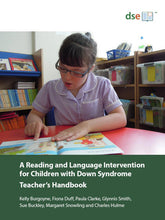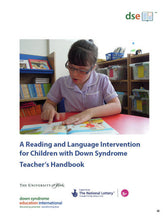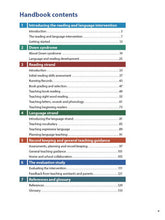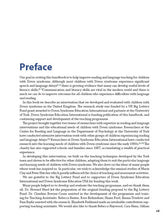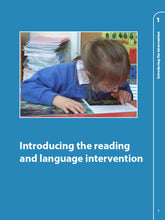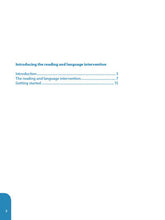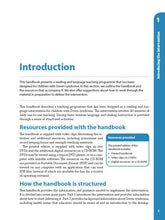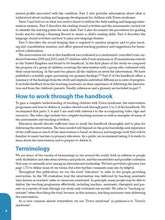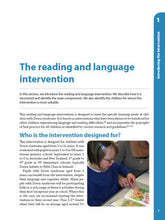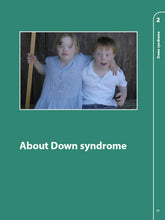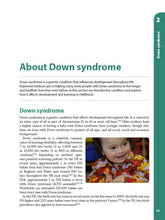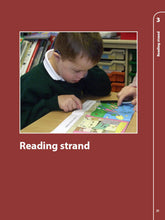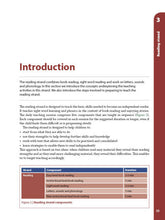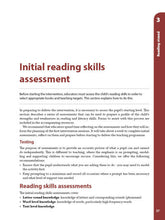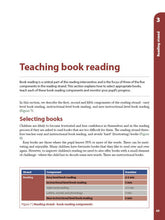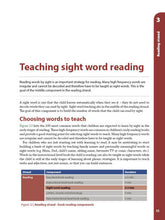
This handbook describes an evidence-based reading and language teaching programme designed for children with Down syndrome. The programme complements regular literacy classroom instruction with individualised teaching of sight words, letter sounds, phoneme awareness and book reading, together with the teaching of vocabulary. It was evaluated in a landmark randomised controlled intervention trial in primary schools in the United Kingdom.
This practical handbook provides detailed guidance, video illustrations, assessment forms and teaching resources to help teachers and teaching assistants implement an evidence-based teaching programme designed for children with Down syndrome. The handbook is written by the team who designed and evaluated the intervention in a major research study in UK primary schools.
The teaching program
The intervention teaches language and literacy skills following evidence-based principles adapted to meet the specific learning needs of children with Down syndrome. It is based on interventions that have been shown to be beneficial for other children experiencing language and reading difficulties, and incorporates the principles of best practice for all children as identified by current research and guidelines. The intervention complements regular literacy instruction, providing a clear framework for the additional individualised support and regular practice needed by pupils with Down syndrome.
The intervention is suitable for beginning readers through to those with reading ages up to 8 years and for students with a wide range of language abilities. Teaching is adapted to meet individual needs through initial assessments of skills and regular monitoring of progress.
The evaluation
The intervention was evaluated in the first randomised controlled trial of an educational intervention designed for children with Down syndrome, and one of the largest of any study of children with Down syndrome to date. The study was funded by the UK Big Lottery Fund and conducted by researchers at Down Syndrome Education International and at The Centre for Reading and Language at the University of York in the United Kingdom.
The evaluation study found that:
- Children receiving the intervention made faster progress on average on a number of measures than children receiving ordinary teaching.
- Gains on four outcome measures were statistically significant (in other words, they are considered unlikely to have occurred by chance) after 20 weeks of intervention. These were single word reading, letter-sound knowledge, phoneme blending and taught expressive vocabulary, reflecting the skills that were most directly targeted by the intervention.
- Children receiving the intervention gained an average 4.6 words on a measure of single word reading over 20 weeks, compared with an average 2.0 words for children in a control group not receiving the intervention: a gain of 2.6 words.
- By the end of the study, 1 in 5 children with Down syndrome achieved word reading scores similar to those expected of typically developing children of the same age.
- Teachers reported that the predictable structure of the intervention led to improved behaviour, attention and engagement in learning.
- Rates of progress for individual children varied widely with some children making substantial progress quickly, some children steadily making slower progress, and a few children making little or no progress.
- Children who started the programme at a younger age, who had better receptive language skills at the outset, and who received the most intervention sessions generally made the greatest progress.
Details
| Author(s) | Kelly Burgoyne, Fiona Duff, Paula Clarke, Glynnis Smith, Sue Buckley, Margaret Snowling and Charles Hulme |
| Publication date | December 2012 (Fourth edition: September, 2021) |
| Language | English (UK) |
| Pages | 144 |
| Binding | Wiro-bound |
| ISBN | 978-1-78261-320-6 |

















